- JAPANESE
- LANGUAGE
X
 THAT IS GOOD
THAT IS GOOD
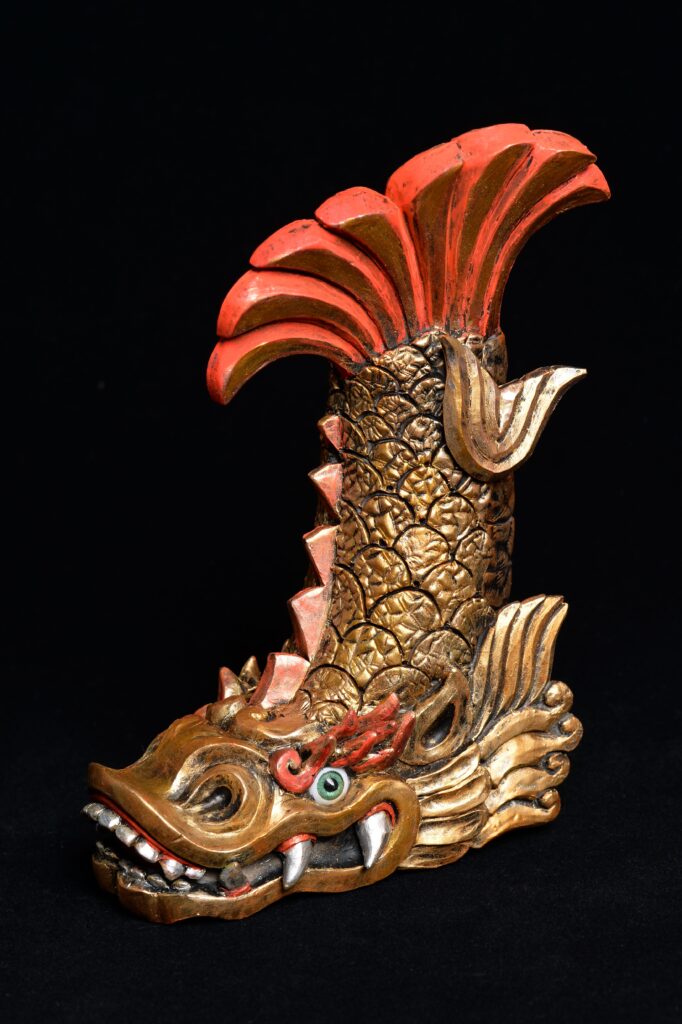
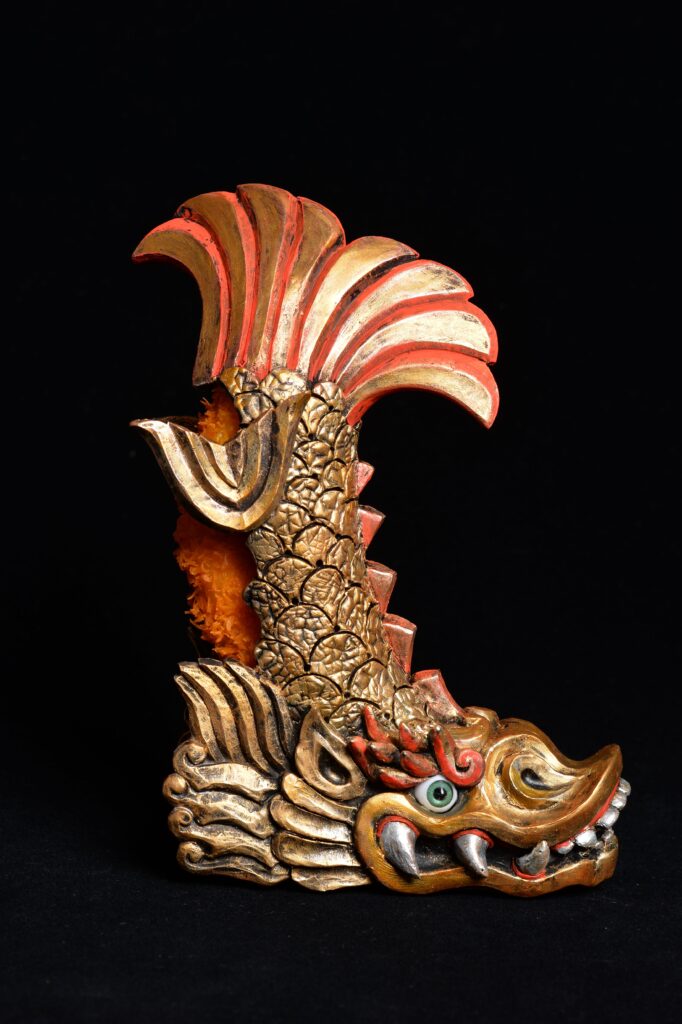

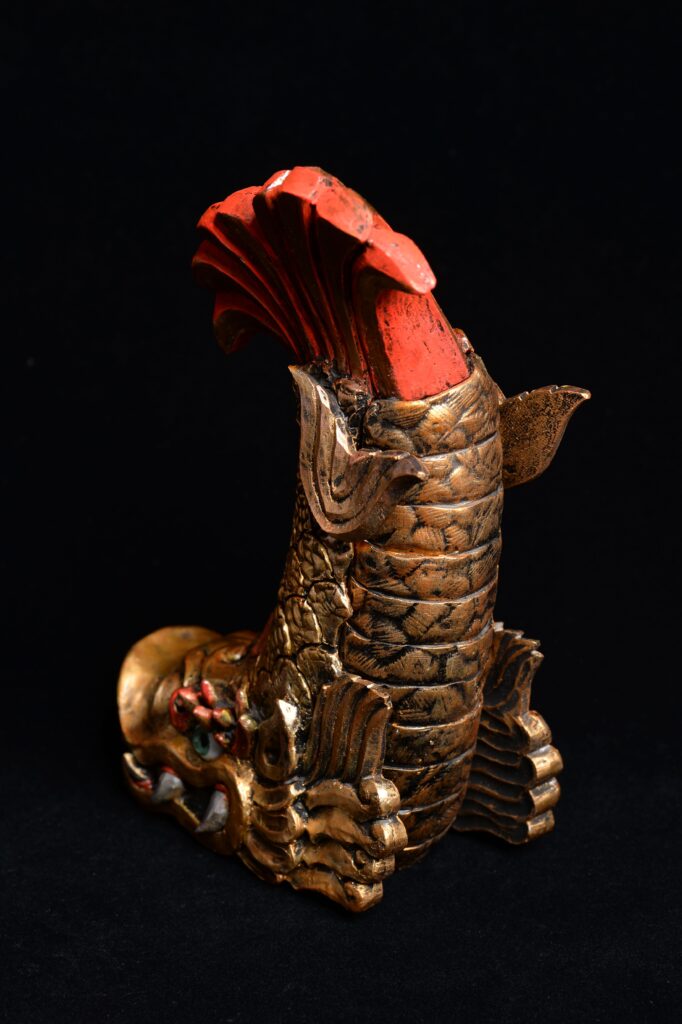
Legal size: Length x Width x Depth = 280 x 120 x 55 (mm)
Materials: Epoxy putty, Sculpey, doll’s eyes
This is a local work from Nagoya, Japan, created in 2016. I have already created a work using Shachihoko* as a motif, a metronome in the shape of Shachihoko called “Shachine”, which I made in 2009, but this is my second appearance because I love the monster (twin-tailed) looking of Shachihoko as much as I love Merlion.
※an animal in Japanese folklore with the head of a tiger and the body of a carp.
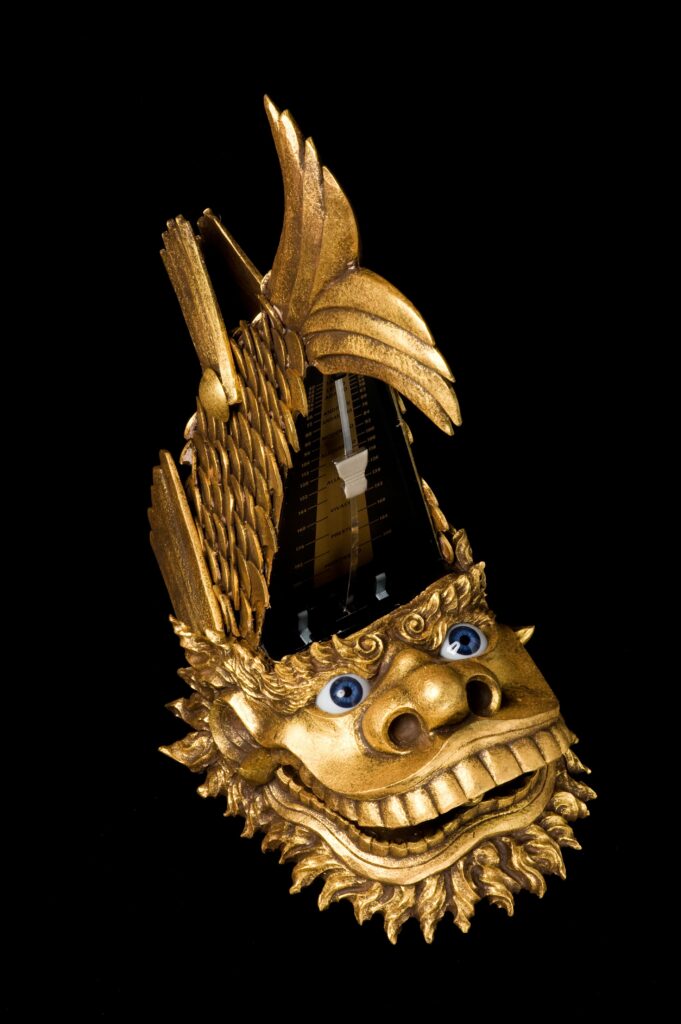
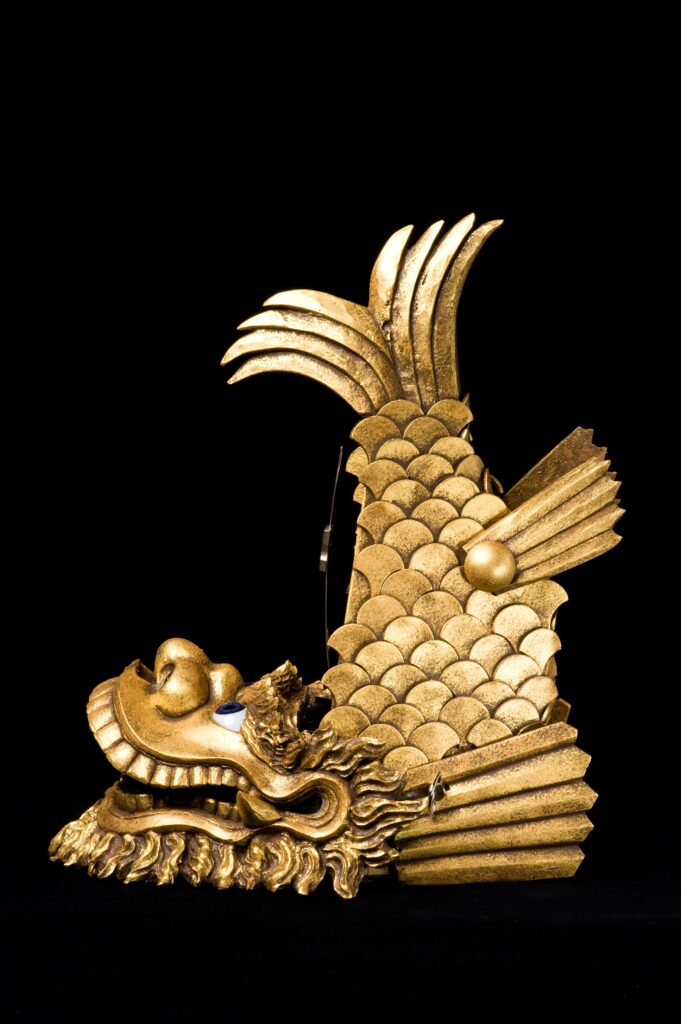
Above Photos:Naoto Otsubo/Kodansha Ltd.
So, to add a touch of Nagoya, I decided to make a case of “EBIFURYA~“(Japanese fried prawns but a little jokey), a representative of Nagoya-meshi (is it even in the category of Nagoya-meshi anymore?). Does a fried prawn really need a case? But that’s beside the point!
The method is to buy a fried prawn food sample on the Internet, wrap aluminum foil around it, put epoxy putty on top of it to make a body, and then sculpt it with Sculpey.
I researched shachihoko from castles around the world, and found that the rules for the face (mouth shape, ears or no ears), the composition of parts, and the colors are completely different depending on the location, so I combined parts that I kind of liked.
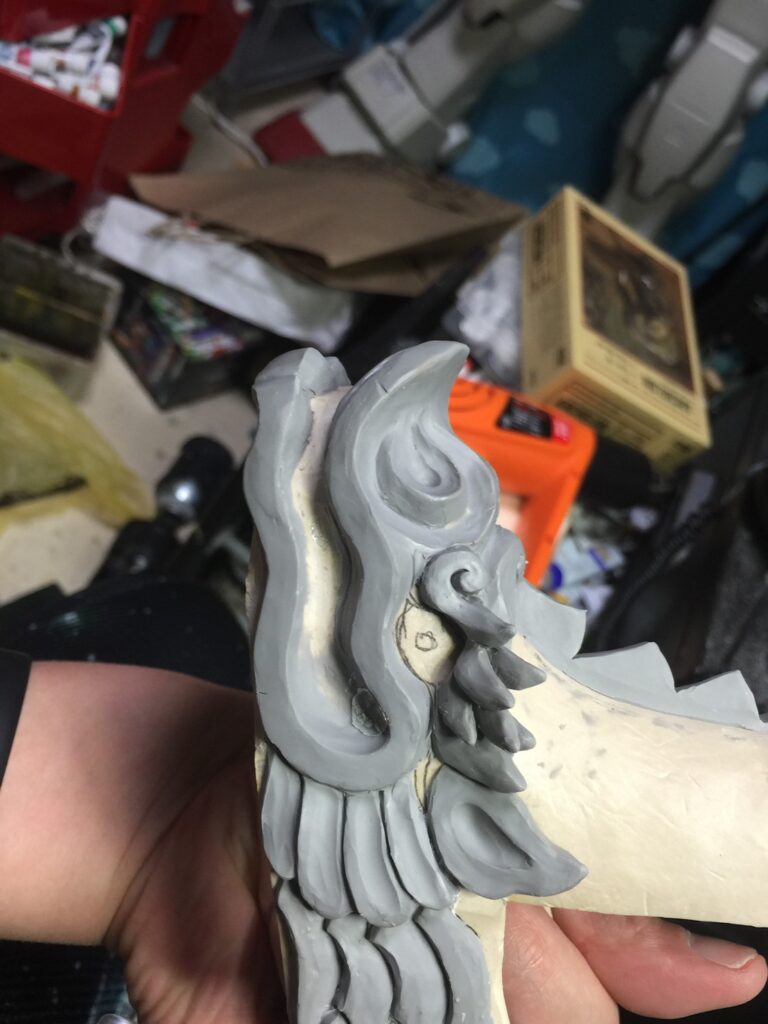

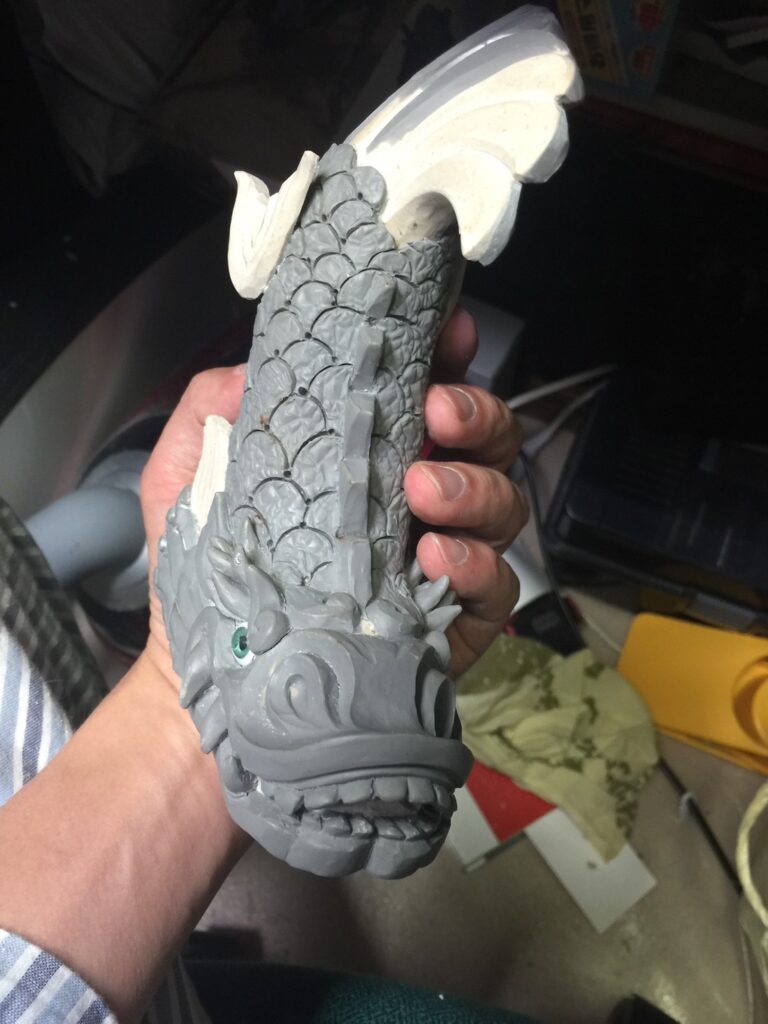
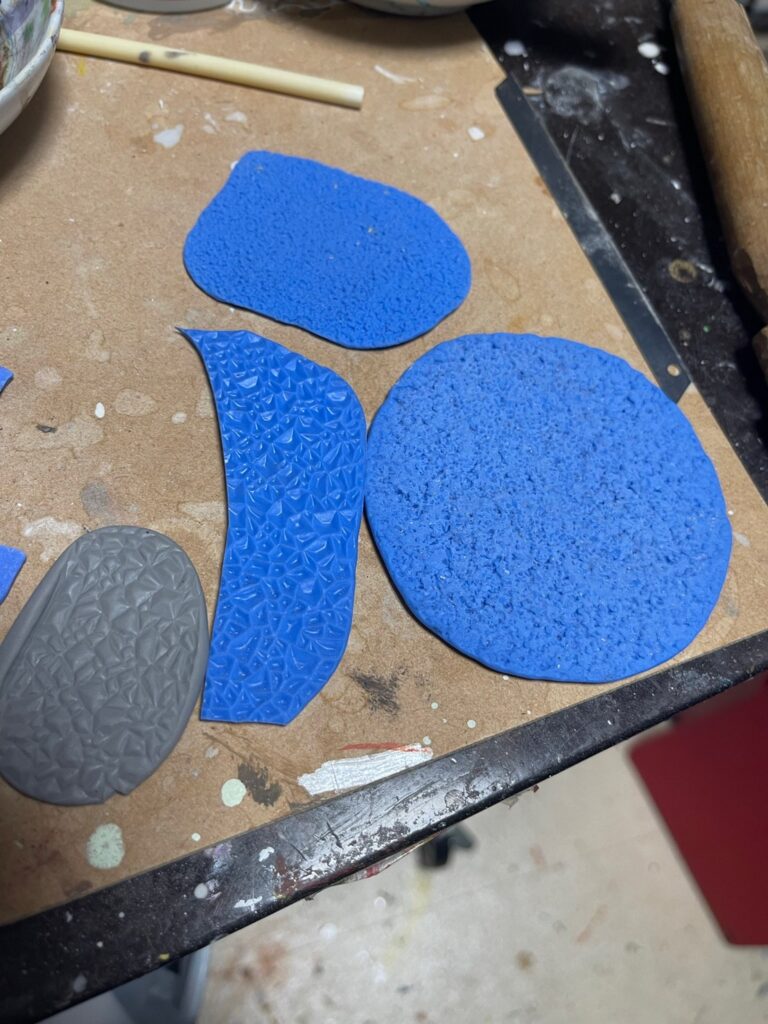
During the production of this work, I was on location for the drama “99.9: Criminal Lawyer,” and was at an old house in a rural area. The pattern on the window glass of the house was beautiful and of a type not used much anymore, so I replicated it by pressing clay silicon rubber onto it and I stamped it on the belly and scales. (At that time, it was a boom to carry clay silicone rubber in a backpack, and when I found a matiere I liked, I stamped clay silicone rubber on it and brought it back home.)
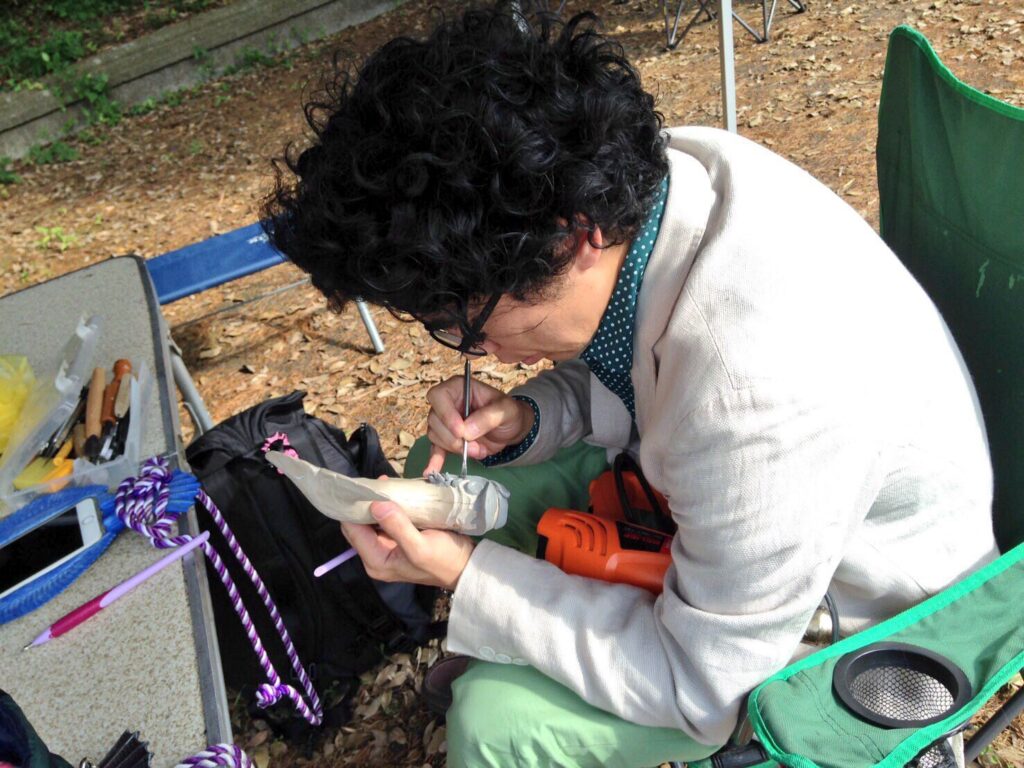
I was not sure whether to choose gold or an austere greenish-blue color, but I decided on gold and vermilion for the appearance of the photo.
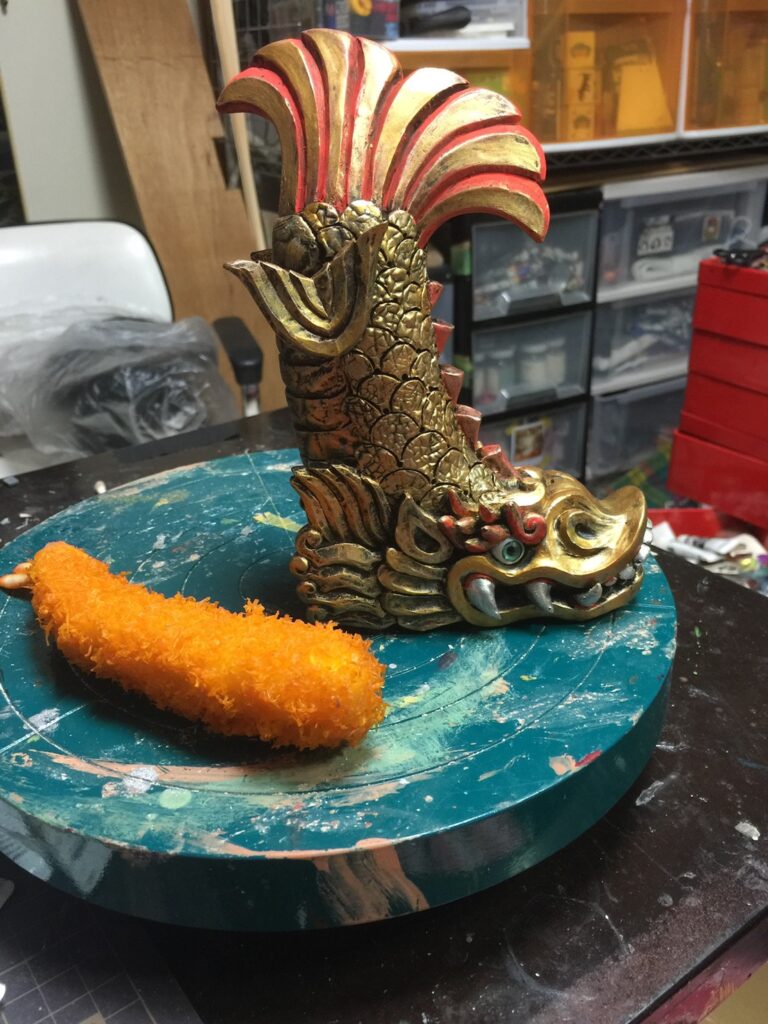
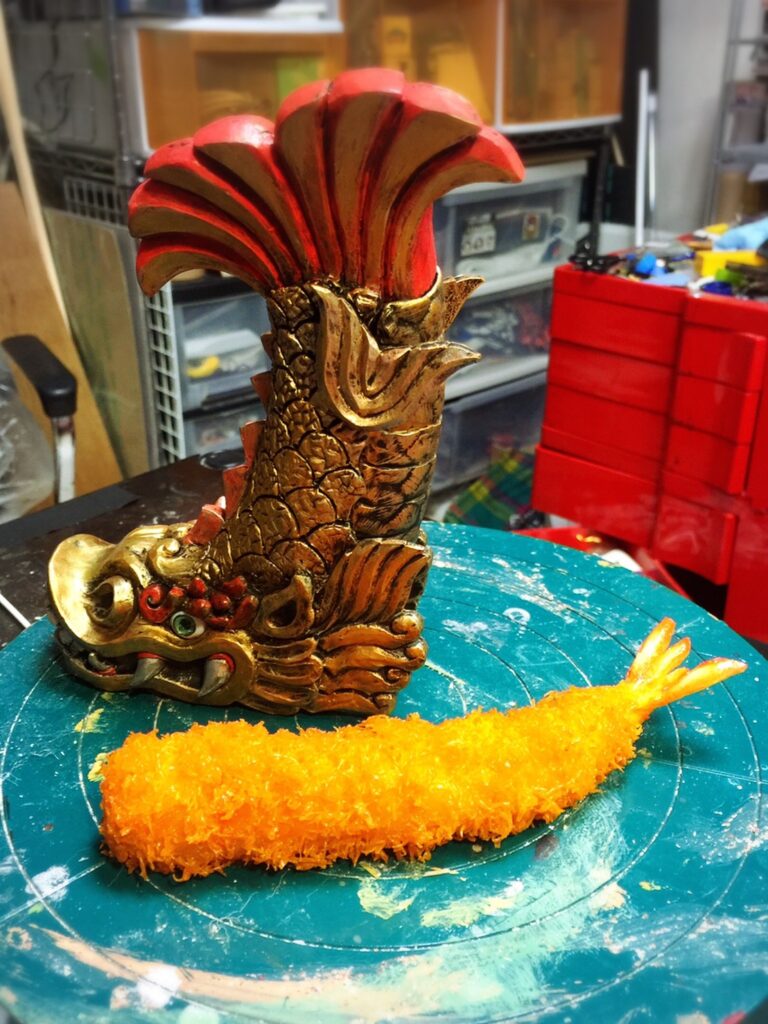
As usual, I could not decide on the name of the work, so I asked Mr. Kagawa and Mr. Jun Matsumoto to come up with many ideas, but in the end I decided on this one that I came up with myself. I don’t really remember why I chose this one… I like the size.
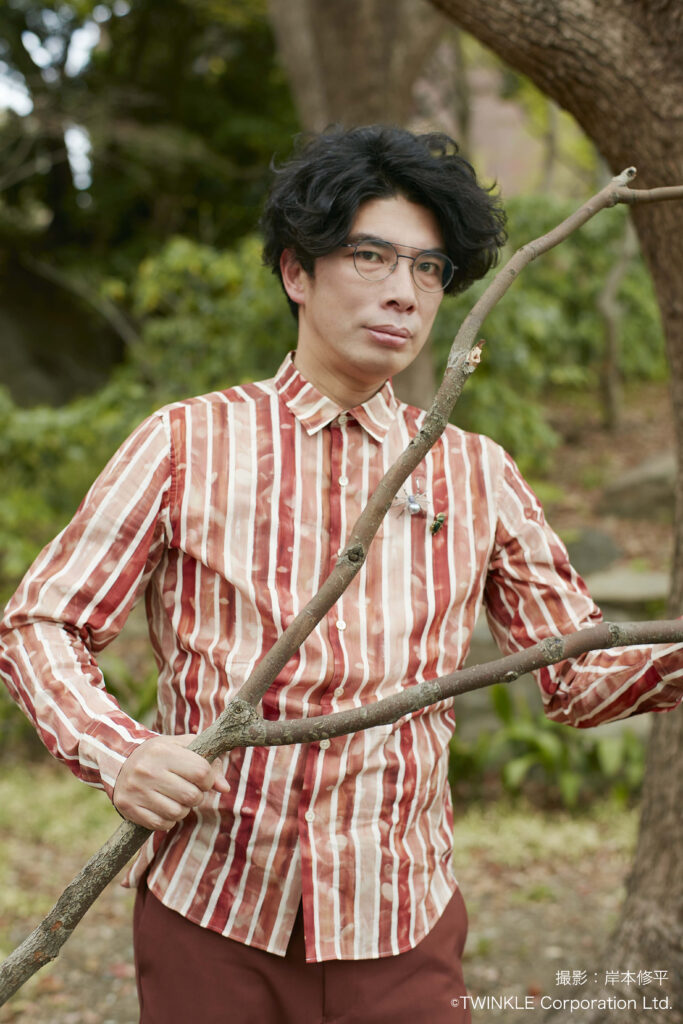
Jin Katagiri
Born November 27, 1973 / Born in Saitama Prefecture / Graduated from Tama Art University
Active in the stage, movies, radio, etc., mainly in TV dramas series. Major appearances in recent years include “99.9% -Criminal Lawyer-” (TBS), “Your Turn to Kill” (NTV), and “NHK Morning drama series Yell” (NHK).
In addition to acting, he also creates clay, and from 2016 to 2018 he held a national tour at the “Jin Katagiri Absurdity Clay Art Exhibit Giri Ten.” In 2019, he is holding his first overseas solo exhibition in Taiwan.
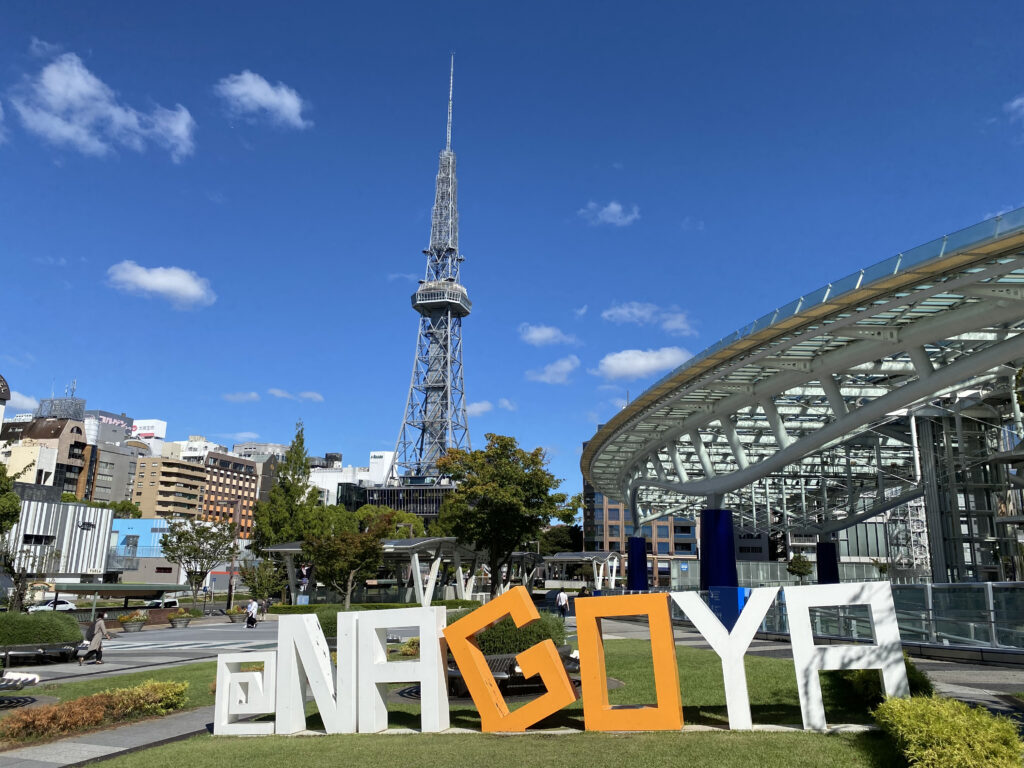
Located in the center of the Japanese archipelago, Aichi Prefecture has the fourth largest population after Tokyo, Kanagawa, and Osaka Prefectures, and Nagoya City in particular is said to have the largest population in the Chubu region. It is said that Aichi Prefecture is the largest manufacturing prefecture in Japan, and has been ranked first in Japan for more than 40 years in terms of industrial shipments, including Toyota Motor Corporation, ceramics, aerospace industry, and steel industry. In addition to industry, there is a lot of fertile land suitable for agriculture, and the self-sufficiency rate of vegetables is also said to be reasonably high.
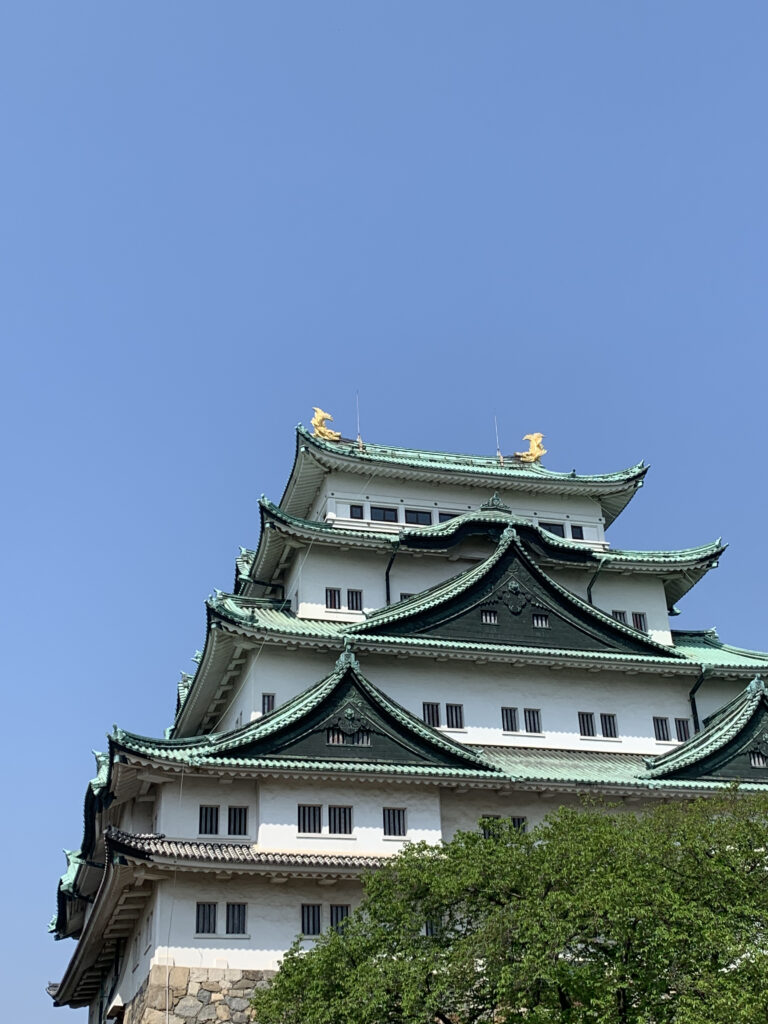
Nagoya Castle was built by Ieyasu Tokugawa in 1615 (Edo period).The golden shachihoko ( Kin-no-shachihoko, Kinshachi, Kinko) shines golden high in the sky as the symbol of the Nagoya Castle.
The shachihoko is one of the ornaments used on the turrets and roofs of castles. The shachi is an imaginary creature, with a dragon (or tiger, as it is also called) for a head, a fish for a body, and a tail that curves back toward the sky. The tail resembles the shape of a spear, hence the name “shachihoko”.
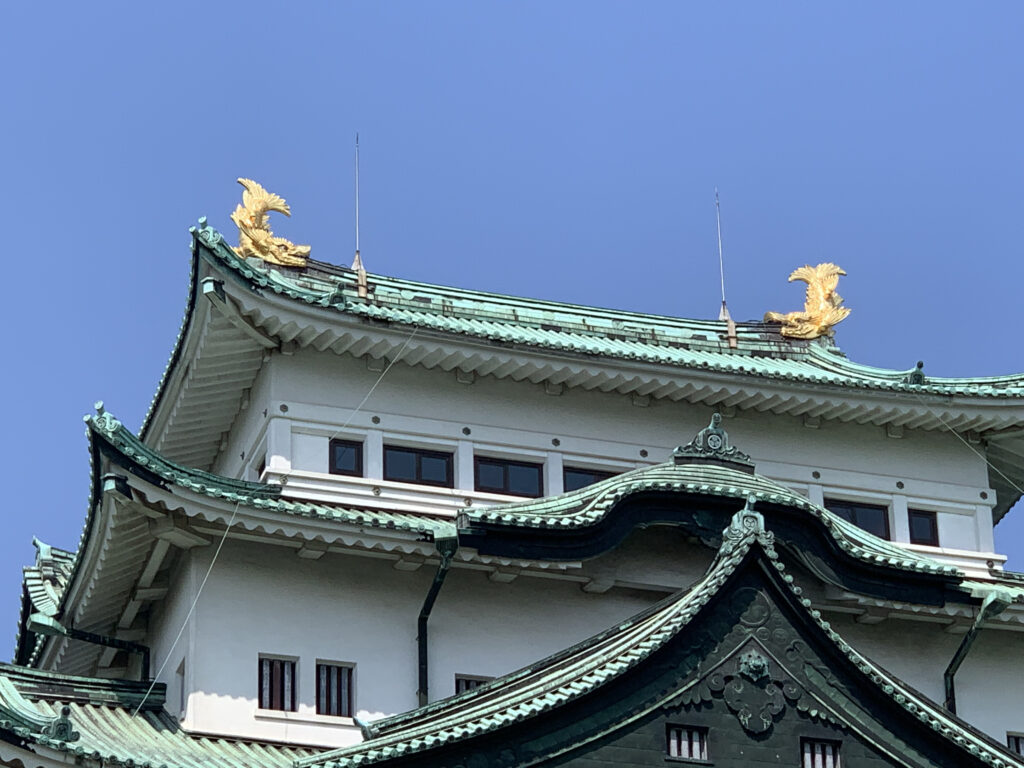
Therefore, shachihoko, which are said to be able to extinguish fires by spitting out water from their mouths, were installed on roofs of buildings such as castle towers as protective deities in the same way as onigawara.
During the Edo period, when the Owari clan faced political difficulties, the value of the golden shachi was counted on each time, and it was refounded three times before the Meiji era (1868-1912). From the Edo period to the Showa period (1926-1989), kinshachi protected Nagoya Castle for 333 years, but the castle tower and keep were destroyed by fire during the Pacific War in 1945. Later, when the castle tower was rebuilt, a second golden shachi was built.
*The Owari clan was a feudal domain located in the western part of Aichi Prefecture that governed Owari, Mino, Mikawa, and part of Shinano (Kiso mountain forests).
It was the first of the three Tokugawa families and had the highest rank among the various feudal lords. It was also called “Nagoya han” because its castle was located in Nagoya Castle in Owari Province (Nagoya City, Aichi Prefecture). The feudal lord was the Owari Tokugawa family.
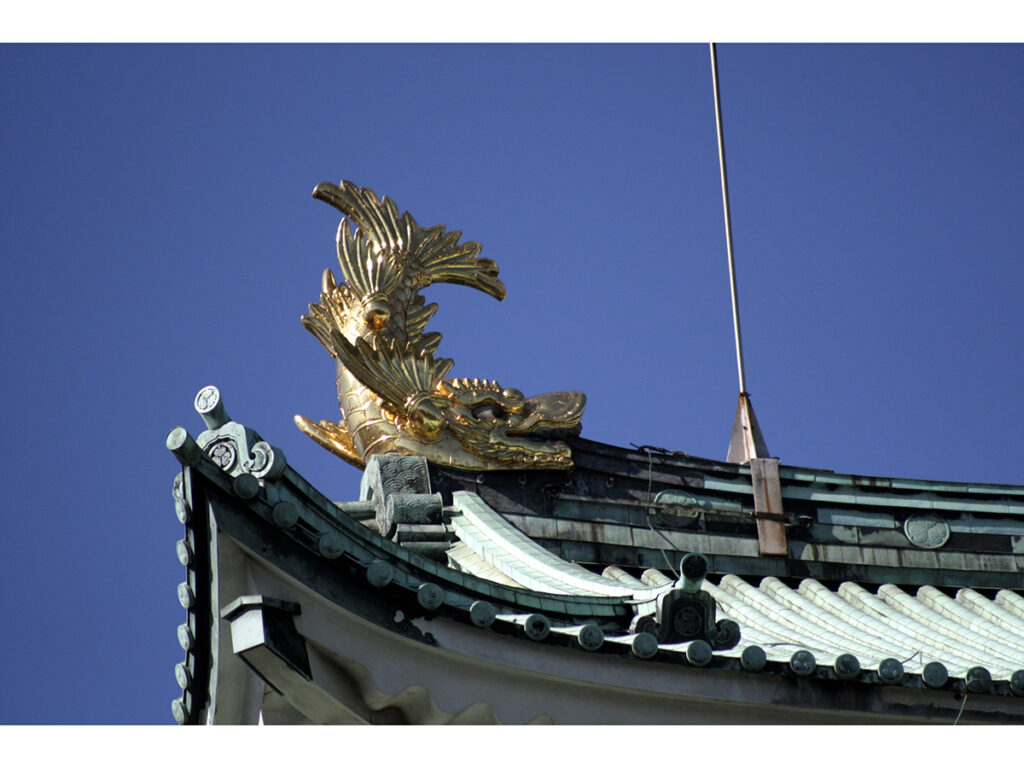
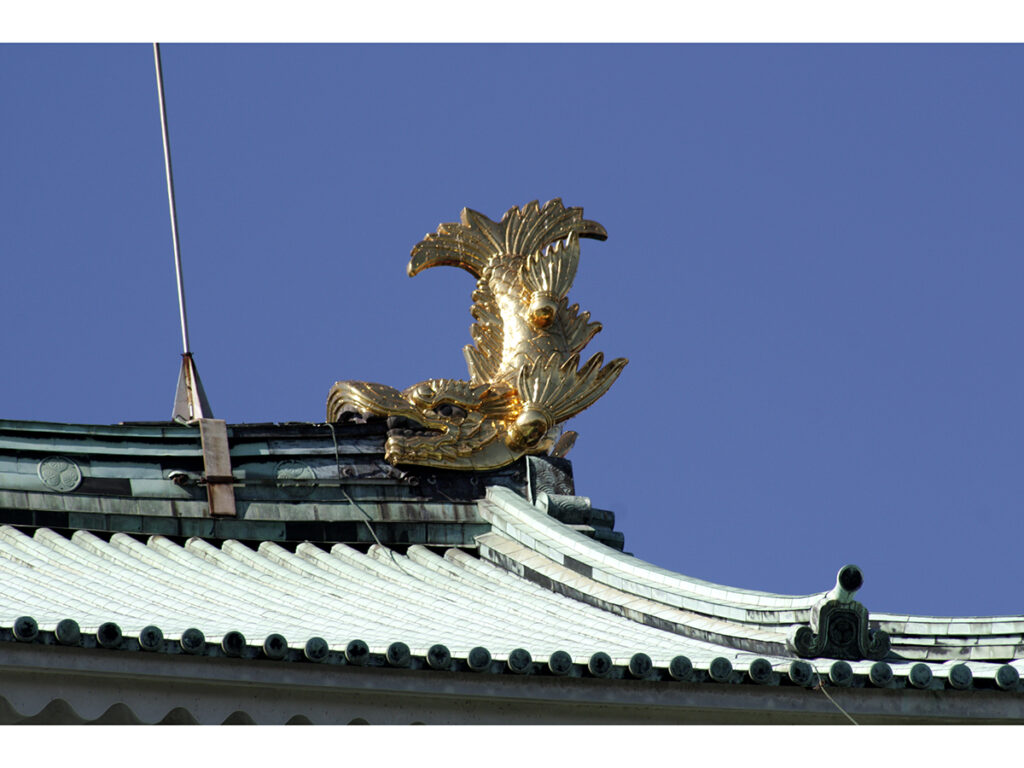
Left: Northern Shachi (male)
Total height: 2.621 m, weight: 1,272 kg, number of scales: 112, gold weight (18k): 44.69
Right: Southern Shachi (female)
Total height: 2.579 m, weight: 1,215 kg, number of scales: 126, gold weight (18k): 43.39 kg
When we think of Nagoya’s local delicacies, we think of “miso katsu,” “hitu-mabushi,” “ankake spaghetti,” “fried prawns,” “morning meal,” etc.
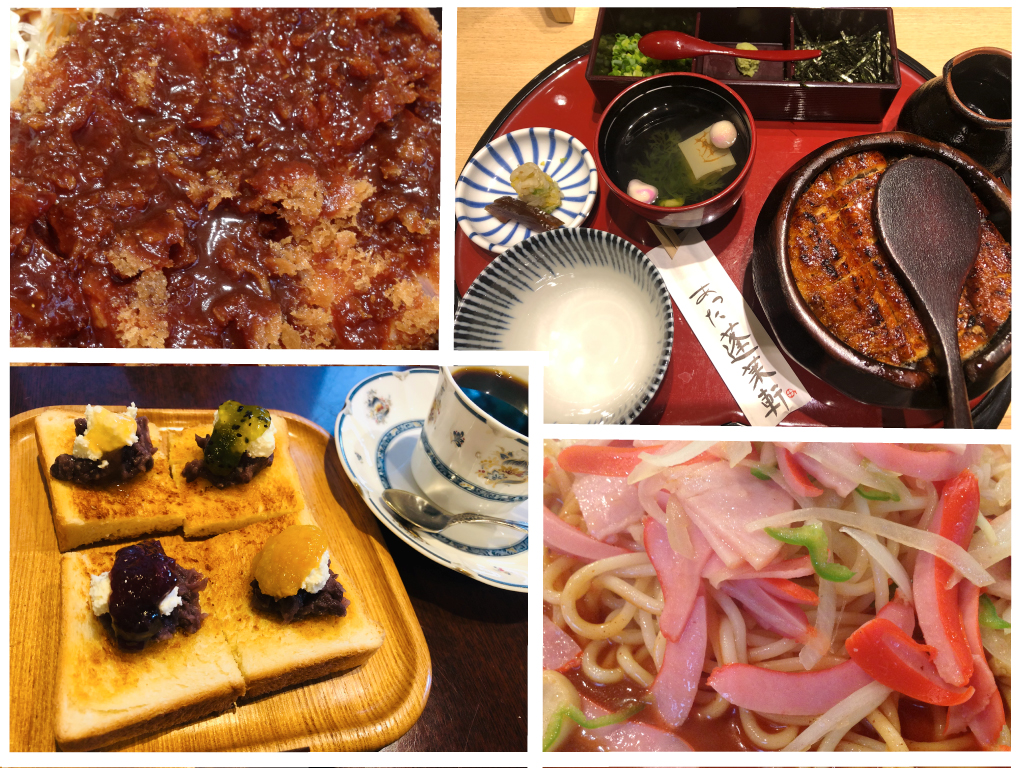
It is said that the birth of “ebifurai” as a Nagoya specialty began when Tamori-san* mentioned it in a TV program as “ebifurya~”. Fried prawns themselves are a dish that can be found anywhere in Japan, so the people of Nagoya were not aware that it was a Nagoya local delicacy.However, it is said that people in Aichi Prefecture have been eating shrimp frequently since the Edo period (1603-1868). Long-established manufacturers such as Itakado Sohonpo and Keishindo of Yukari, a popular Nagoya souvenir shrimp cracker, have a history of about 130 years! “Nagoya’s unique fried prawns” as a local gourmet food.
※Kazuyoshi Morita, aka Tamori, is a Japanese comedian and television host.
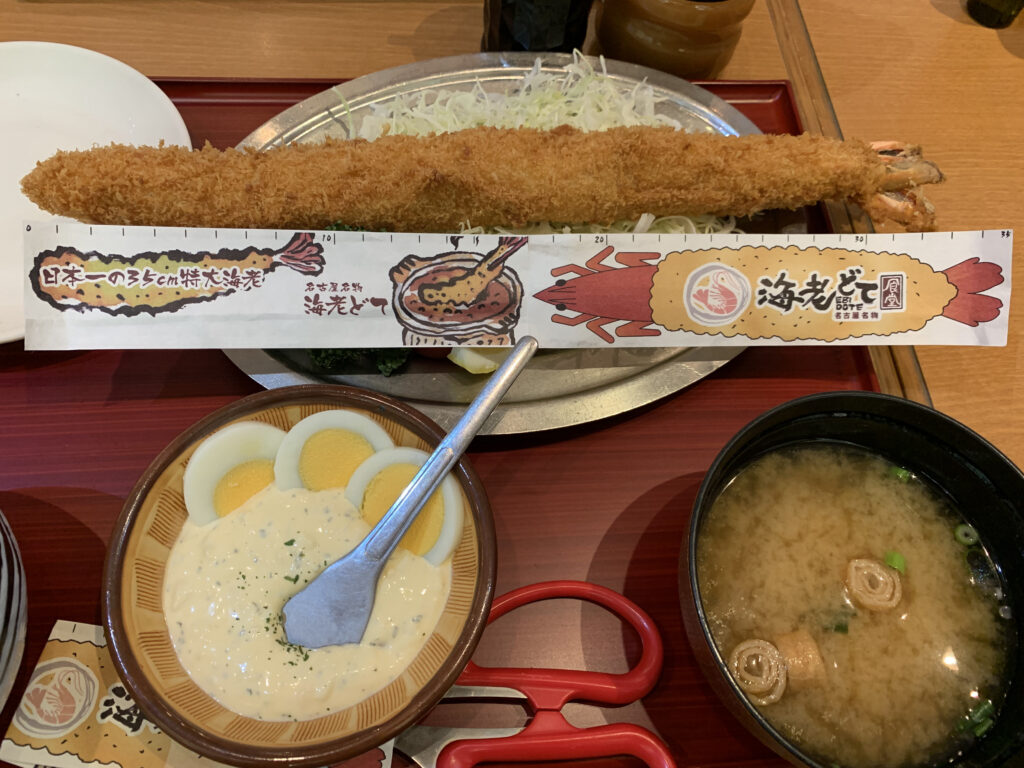
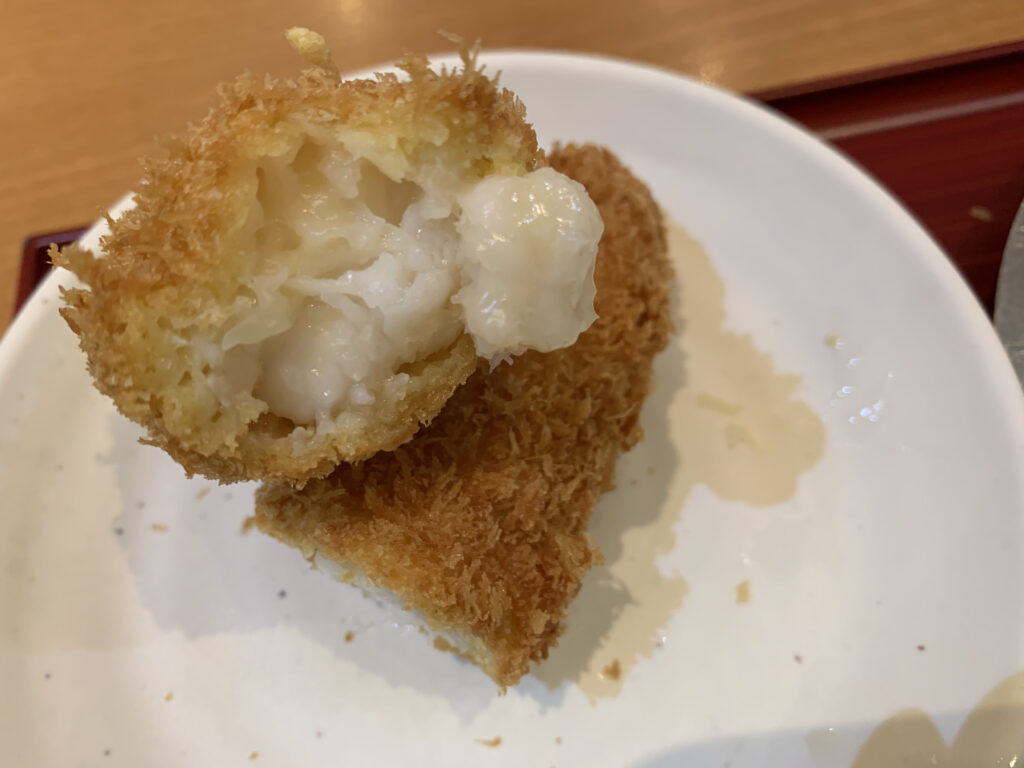
I went to see a full-size replica of a golden shachihoko in Shachihoko Yokocho, next to Nagoya Castle. Then I saw it! The “Shachihokong,” a local monster created by figure sculptor Hiroshi Sagae, was on display. Coincidentally, the event “I made something boring again” that Mr. Katagiri is scheduled to attend this month (Sunday, May 15) is themed on “local monsters” originally conceived by Hiroshi Sagae. His first new one in a long time! I am very much looking forward to seeing what kind of monster will be created.
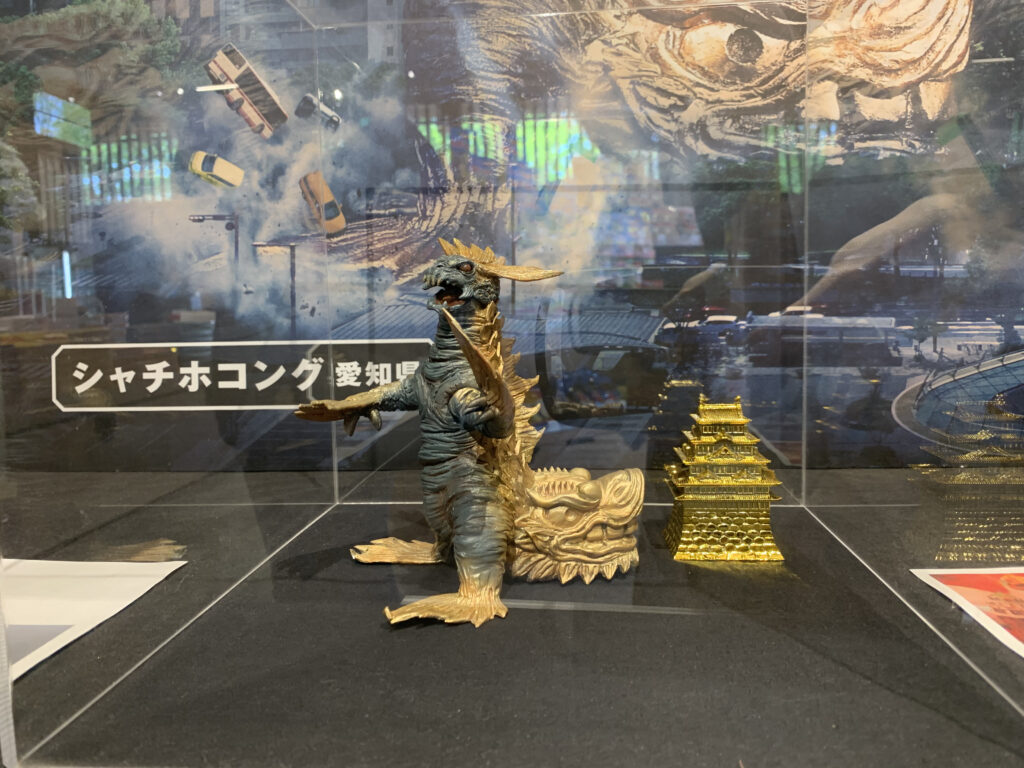
What is “Mata tsumaranumonowo tsukuttesshimatta (a.k.a. Matatsuma. It means “I made something boring again”)”
It is a craft entertainment in which participants create a work based on a theme and present it with a reserved “It’s a boring thing, but…” feeling.
This year’s theme was “Local Monsters,” and each participant presented a monster from a region with which he or she was familiar.
●Performers
Jin Katagiri (Actor, Sculptor)
Keiko Otohata (delusional craftsman)
Taiga Lee (delusional inventor with an after-school crush)
Dehara Yukinori (Figure illustrator)
●Date and Time
Sunday, May 15, 2022
Doors open 12:00
Concert begins at 13:00
Scheduled to end at 16:00
●Venue
Takamatsu City Busshozan Exchange Center “Furatto Busshozan”
218-1 Kou, Busshozan-cho, Takamatsu City, Kagawa Prefecture
2 minutes walk from Kotoden Busshozan Station
Parking lot available
Parking lot available
10 min walk from TOYTOYTOY
●For “MATATSUMA” tickets, please see here. (Only in Japanese)
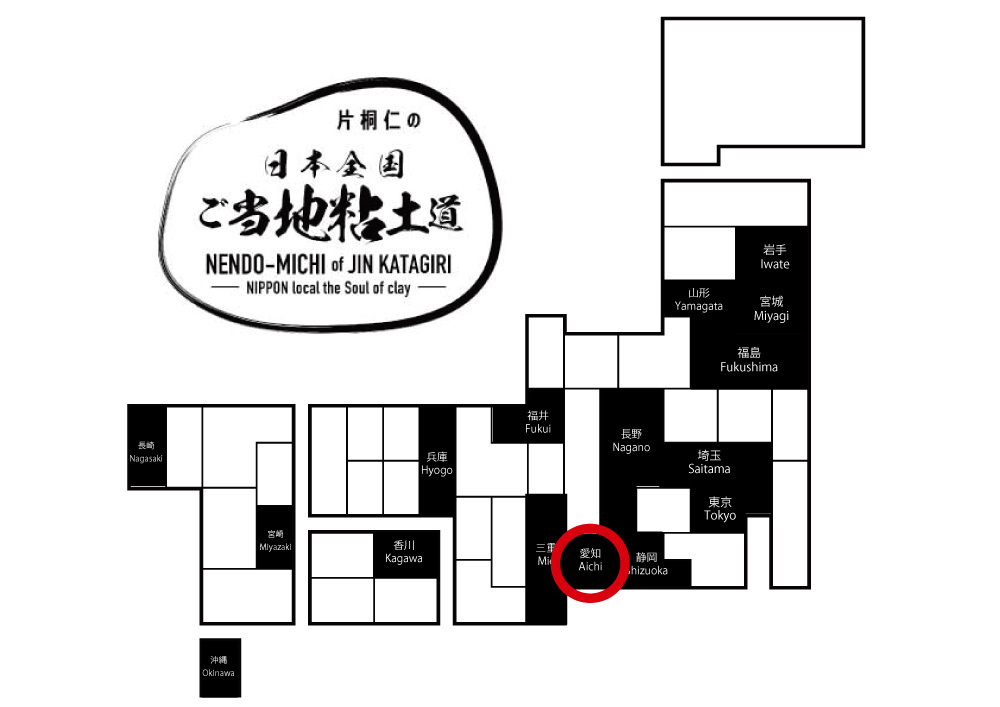
TEXT : THAT IS GOOD editorial department, Fujita